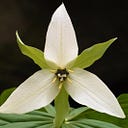Regenerative Everything from Microbial Fuel Cells
Insomnia Can Be Fun
Plants feed us, clean the air, sequester carbon, and generate electricity.
2022 is a great time to play with the potential of microbial fuel cells at home and at school, and envision a future that is free from burning fossil fuels or biofuels. Another insomniac night, and now I’m dropping some ideas here. I’ll keep refining for my own purposes and sharing how it goes as my boys and I try to build out some “biochar batteries.” =D
The Basic Science
This is the essence of how Microbial Fuel Cells work:
This is a 161 page thesis on the topic by Marjolein Helder, one of the founders of Plant-e. I found out about them from Godfrey Kyazze whose awesome work in the field resulted in this fine essay he published on 12/22/20 about four ways that microbial fuel cells might revolutionize energy production in the future.
Products for sale and videos that followed my train of inquiry include: MudWatt Kit, DIY microbial fuel cells from sludge, or a vermiculture (worm compost) based energy generator.
To get started with an easy science experiment for my 10 and 13 year olds, I purchased a couple of MudWatt Kits.
Here are some of our questions:
Would “mud” that is higher in organic matter produce more electricity?
Would the soil produce more electricity with plants?
How long will the fuel cells last?
Will the last longer if we add compost?
Would a kitchen vermiculture compost system produce more or less electricity?
Can we create a biodegradable container that lives as long as the battery thrives?
Can we create a 99% compostable battery?
How much energy might we generate?
Energy Generation Projections
Fun facts from the “how to” website:
- Recent research has estimated that harvesting electricity from soil could produce as much as 1,000 gigajoules per hectare (2.5 acres).
- A barrel of oil contains around 6 gigajoules of chemical energy.
- If 27 European Union countries in 2010 consumed 74.2 billion gigajoules.
Market Projections
Shortages projected for graphite for lithium-ion batteries (12/20/21 article)
According to the article, graphite can be either synthetic or natural, with the “natural graphite” being preferred for being the more “sustainable” option. Where do we get “natural graphite”?
Graphite deposits are found in various places on the earth, including Asia, Africa, and North America. However, graphite is not suitable for batteries straight out of the ground and must be processed first. One hundred percent of the world’s processed graphite comes from China, which marks a significant supply chain issue.
The primary supply chain issue is that there are no capabilities of processing graphite outside of China at this point.
But… Graphite can also be made from biochar.
Further Speculations: Creating Currency
How about creating a currency from:
- generating electricity
- sequestering carbon (healthy soil biomass)
- organic food production
- selling devices/kits
Somehow, to generate the currency, you have to sell the electricity, food, carbon credits, or kits.
The of course, to increase the surface area for microbes to populate and thrive, we can create biochar batteries. Here is a video on how to make them.
Right now, people are beginning to get excited about generating a currency that is backed by carbon credits from sequestering carbon. How about generating a spendable ‘currency’ through electrical current generation that simultaneously sequesters carbon, and even produces food?
